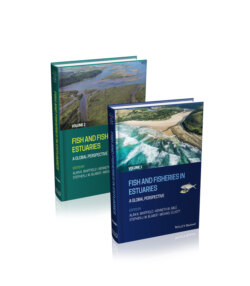Читать книгу Fish and Fisheries in Estuaries - Группа авторов - Страница 91
3.6.8 Fundulus heteroclitus (Fundulidae)
ОглавлениеEstuarine shorelines, fringes and adjacent marshes provide habitat for numerous, small, abundant and primarily demersal resident fishes (Able et al. 2022). These fishes reproduce in the estuary and their young recruit to local habitats, often on the fringing shorelines. An example is Fundulus heteroclitus, a small fundulid found along the Atlantic coast of the USA and Canada (Able & Fahay 2010). Adults have limited home ranges and spawn intertidally. Although relatively little is reported on growth and mortality of its eggs and larvae on regional scales, or of recruitment variability, there is considerable knowledge of its dynamics at smaller scales. For example, Kneib (1993) reported fivefold variability in weight‐specific growth rates (0.027–0.143 d−1) and major variability in mortality rates (0.001–0.118 d−1) in enclosure experiments in a Georgia (USA) estuary, indicating that substantial variability in cohort‐specific recruitment levels would be expected. In this case, variability in recruitment was primarily attributed to duration of tidal flooding; longer flood‐tide durations positively influenced growth of larvae and resulted in reduced mortality rates, apparently related to tidal delivery of food. The importance of larval and small juvenile stages was demonstrated in a Delaware (USA) marsh, where production by young‐of‐the‐year individuals contributed 71.6% to the total annual production by this species (Teo & Able 2003).
Figure 3.23 Weight‐specific growth coefficient (G), mortality coefficient (M) and the ratio G/M for Lateolabrax japonicus five‐day larval cohorts in relation to mean daily temperature experienced by each cohort in the Chikugo Estuary, Japan. G/M is an indicator of productive potential and potential to recruit
(from Shoji & Tanaka (2007b, their figure 5)).
